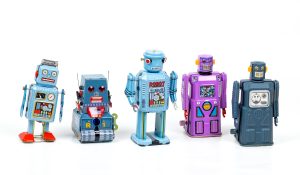Are you teaching your students RPA?
The National Convergence Technology Center’s (CTC) most recent “Brown Bag” webinar featured a look at robotic process automation (RPA). The presenter was Dr. Rajiv Malkan, a Professor in the Computer and Information Technology Department of Lone Star College, Montgomery in Houston with over 30 years of leadership contributions in higher education within multiple settings and has driven key initiatives in education delivery, thought leadership, grant writing, and global partnerships. Rajiv explained key concepts of RPA and why educators should consider adding RPA to curriculum.

First launched in 2020, the “Brown Bag” series offers special topic presentations via bite-sized, 30-minute segments on both technical and employability topics. To date, these webinars have been attended “live” by over 470 people with another 1100 views of the recordings on YouTube.
Next up, on Wednesday February 22 (12:30pm Central), will be a Brown Bag presentation on how Sinclair Community College in Ohio teaches classes in state correctional institutions. Register to attend here.
Below are a few highlights of Rajiv’s RPA talk. To view the entire presentation, visit.
* The biggest business benefit of RPA is that by performing repetitive, mundane tasks, RPA frees employees up to do higher-value tasks. Those low-level jobs that had once been off-shored to inexpensive labor pools overseas is now moving back in-house with RPA bots. American Airlines reduced one airport gate process that had been taking four hours down to just two minutes with the help of RPA.
* RPA bots are easy to develop scale, and reuse. Most are powered by low code or no code drag-and-drop interfaces. And because they’re driven by business rules, they often eliminate a lot of unavoidable human error – like accidentally transposing Social Security numbers.
* According to Gartner and Forrester, RPA is a $15 billion industry right now and they expect the market to quadruple in the next five years. There is an exponential demand for all RPA apps and bots.
* The cost to develop an RPA bot can be 70% cheaper than developing a traditional app.
*Learn more from this Deloitte video.
